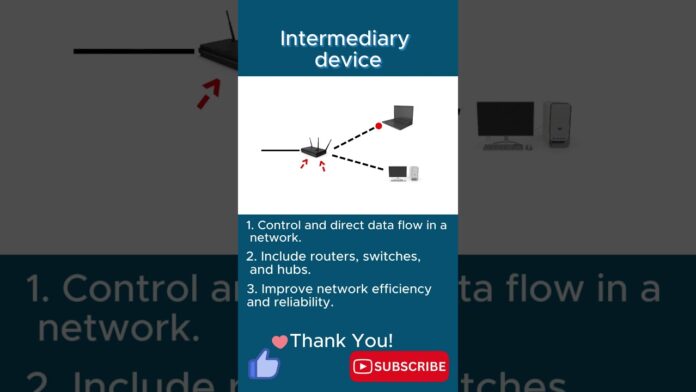In the intricate tapestry of network architecture, intermediary devices serve as the unsung heroes, quietly orchestrating the flow of data and ensuring seamless communication between end devices. From routers and switches to firewalls and access points, intermediary devices form the backbone of network infrastructure, playing a crucial role in facilitating connectivity, security, and resource management. In this article, we delve into the realm of intermediary devices, exploring their diverse types, functions, and indispensable contributions to modern networking.
Unveiling Intermediary Devices:
Intermediary devices, as the name suggests, occupy the middle ground between end devices and network infrastructure components. Unlike end devices, which interact directly with users, intermediary devices focus on directing and managing data traffic within a network. These devices come in various forms, each designed to perform specific functions that contribute to the overall efficiency and reliability of network operations.
Types of Intermediary Devices:
- Routers: Routers serve as the gateways between different networks, directing data packets between source and destination devices across multiple networks. They analyze network addresses, make routing decisions based on routing tables, and ensure that data reaches its intended destination efficiently.
- Switches: Switches facilitate communication within a single network by forwarding data packets directly between devices within the same network segment. They operate at the data link layer of the OSI model and use MAC addresses to deliver data packets to their respective destinations, thereby optimizing network performance and reducing congestion.
- Firewalls: Firewalls act as the guardians of network security, monitoring and controlling incoming and outgoing traffic based on predefined security rules. They protect networks from unauthorized access, malware, and other security threats by inspecting data packets and enforcing access policies to safeguard sensitive information and resources.
- Access Points: Access points (APs) enable wireless connectivity within networks, allowing end devices to connect to the network wirelessly. They serve as the bridge between wired and wireless networks, providing secure access to network resources and facilitating mobility and flexibility for users.
Role and Importance:
Intermediary devices form the backbone of network infrastructure, providing the essential functions necessary for reliable and efficient communication. They ensure that data flows smoothly between devices, networks, and services, while also safeguarding network integrity and security. Without intermediary devices, network communication would be fragmented, insecure, and prone to congestion and inefficiency.
Intermediary devices play a vital role in shaping the architecture and functionality of modern networks. From routing and switching to security and wireless connectivity, these devices serve as the linchpins that bind networks together, enabling seamless communication, collaboration, and innovation across diverse environments and industries. As we continue to embrace the digital age, the importance of intermediary devices in powering the connected world cannot be overstated, underscoring their indispensable role in the fabric of network infrastructure and the broader landscape of technology-driven societies.
